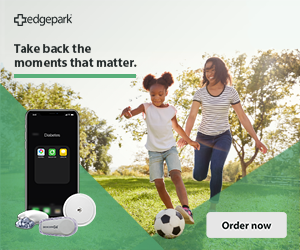What to do in the event of a CGM sensor failure
Continuous glucose monitors (CGMs) have made life with diabetes more seamless and convenient, allowing people to avoid the pain of constant finger pricks. However, no technology is perfect — CGM sensor failure is an inevitable part of diabetes management.
The devices are highly sensitive and accurate, but similar to insulin pump malfunctions, CGMs are known to fail every now and then.
In my experience, when a CGM sensor fails, it feels like a waste of my precious type 1 diabetes (t1d) tools and technology. It's one less lifeline to count on. One less option for middle-of-the-night blood sugar reassurance.
Luckily, there are resources you can tap and steps you can follow when you experience a CGM sensor failure. Here's what to know.
What a sensor failure means
A sensor failure is different from having inaccurate readings or experiencing a signal loss. Thankfully, the situation isn't quite as urgent as an insulin pump or pen malfunction, especially if you're prepared with backup sensors and/or your regular blood sugar meter.
If your sensor fails, your CGM app will prompt you to immediately remove your sensor and replace it with a new one. Whereas your app/reader will still function properly, a sensor failure means that the sensor itself is faulty. This is a somewhat common occurrence among CGM users — all users will likely experience this at least once.
If you receive either a "sensor failure" or "sensor error" message, here are some of the problems that may be the root cause:
- Your previous sensor session didn't end properly and your transmitter is still trying to connect to the old sensor.
- Your sensor site may not have been properly cleaned (with an alcohol wipe only).
- You're bleeding underneath the sensor site.
- You entered the incorrect transmitter serial number during the insertion process.
What to do when your sensor fails
There's no way to restart or resolve a failed sensor, so when you receive an error message, you'll need to remove the sensor and insert a new one. After replacing the sensor, it's wise to contact tech support for whichever CGM brand you're using. The representatives will collect important details from you and will likely make plans to replace the failed sensor right away.
Here's the contact information for the major CGM manufacturers:
Dexcom Tech Support: Visit dexcom.com/tech-support or call 1-844-607-8398
FreeStyle Libre Tech Support: Visit https://www.freestyle.abbott/us-en/support/contact-us.html or call 1-855-632-8658
MiniMed Guardian Support: Visit https://www.medtronicdiabetes.com/contact-us or call 1-800-646-4633
What to do if you run out of sensors
When dealing with a CGM sensor failure, it's possible you might run out of sensors. In this situation, here are the most important steps to take:
- Check your blood sugar levels manually every hour after removing the sensor.
- Call the tech support line for your CGM manufacturer to report the issue you're experiencing.
- If you're completely out of sensors, note that when speaking with tech support and request that they expedite shipping.
- Call your doctor to request they write a prescription for backup sensors.
- If you order your diabetes supplies through a supplier such as Edgepark, follow up with customer service as needed.
- Continue to test your blood sugar levels regularly and continue your normal diabetes management routine, or as advised by your doctor, until your new sensors arrive.
Creating a backup plan for a sensor failure
Although some sensor issues and failures can't be avoided, you can take steps to prepare for a sensor failure:
- Keep plenty of alcohol wipes on hand for your next sensor insertion.
- Make a plan with your diabetes healthcare team to have backup sensors on hand if possible (perhaps even another brand).
- Keep your manual blood sugar meter nearby, and bring it with you when you're out and about.
- Keep a month's supply of test strips on hand at all times.
- Always have low blood sugar supplies on hand in case of an emergency (i.e., juice, fruit snacks, and glucose tabs).
Yes, CGM sensor failures happen — but as long as you're aware of the resources available to you, the issue can be taken care of in no time.
Curious to learn more about CGM technology and the benefits it offers? Explore the selection of CGM options available through edgepark.com.




